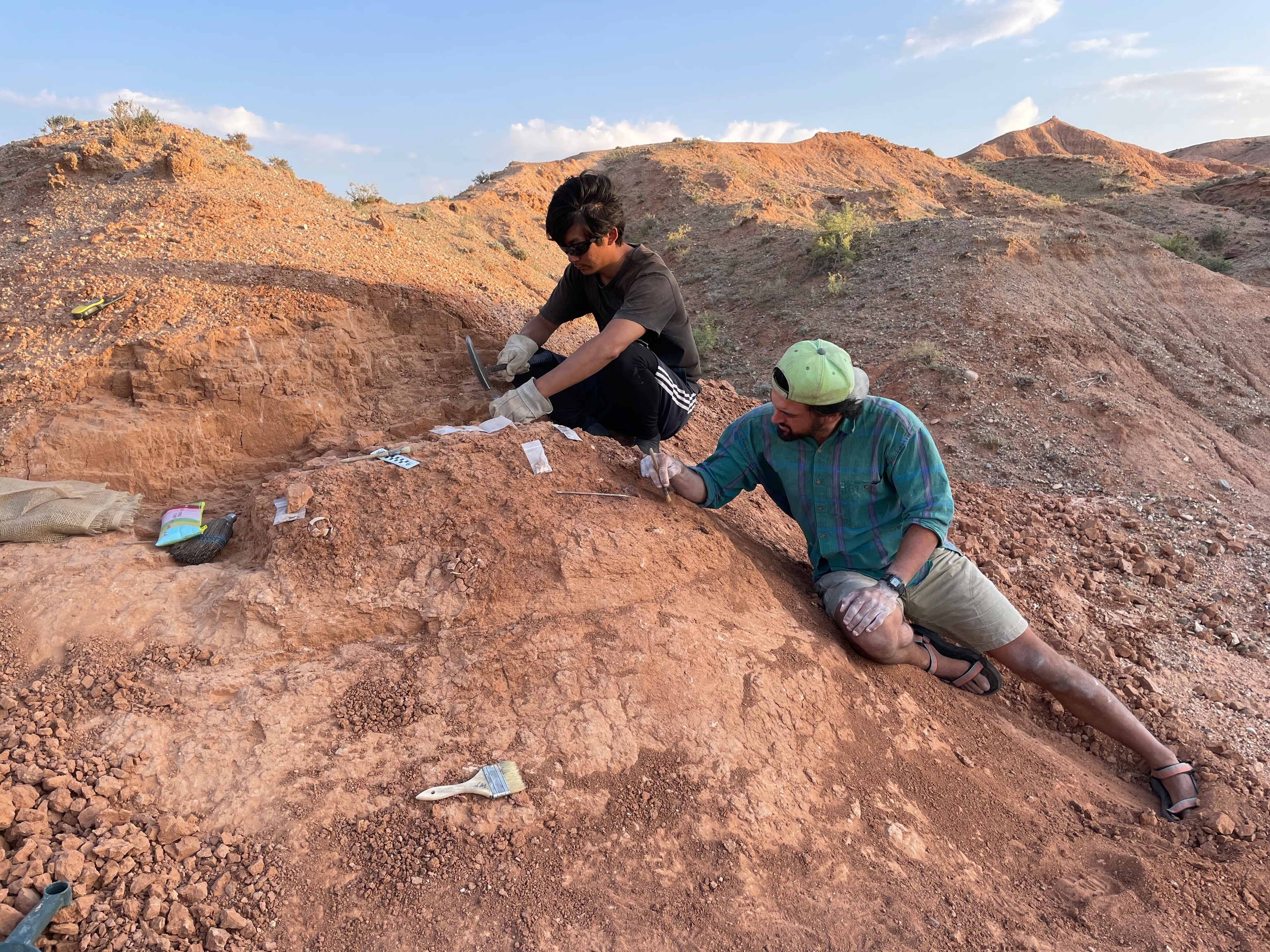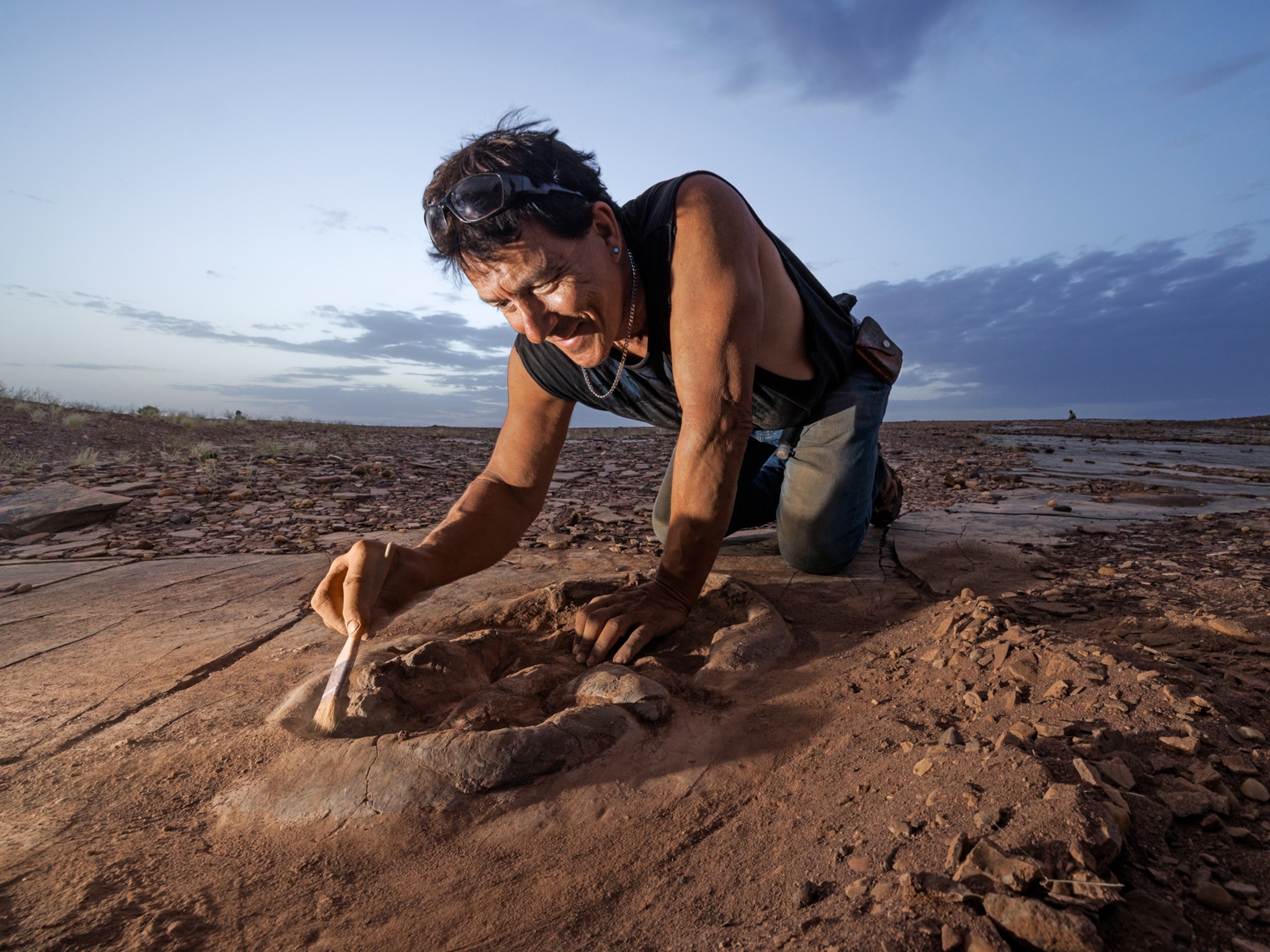New Dinosaur Species Was Largest Animal Ever to Walk the Earth
Meet Patagotitan mayorum, a long-necked behemoth that weighed as much as 12 African elephants.
A newly named species of sauropod is not only the largest known dinosaur, it now also holds the record as the largest animal that has ever walked on land.
That's the conclusion of the first scientific description of an especially large titanosaur, which lumbered across what is now Argentina during the Cretaceous.
Dubbed Patagotitan mayorum, the long-necked behemoth lived about 102 million years ago and was likely more than 120 feet long and weighed 69 tons, or about the same as 12 African elephants (the current largest land dweller).
By those numbers, Patagotitan just edges out the previous “largest dinosaur ever,” another titanosaur called Dreadnoughtus.

When paleontologists José Luis Carbadillo and Diego Pol from the National Scientific and Technical Research Council (CONICET) and the Egidio Feruglio Paleontology Museum first saw hints of the fossil on a farm in the Patagonia region of Argentina, they knew it was going to be big.
The team spent over a year painstakingly excavating the fossil. Kenneth Lacovara, a paleontologist at Rowan University and the discoverer of Dreadnoughtus, commiserates with this task.
"I, more than most, I think, can empathize with them over the amount of sweat, toil, frustration, and aggravation experienced when attempting to get bones of this size and quantity out of the ground and safely to a museum."
Sizing Up Dinosaurs
A full model of the huge titanosaur found its way into a major permanent exhibit at the American Museum of Natural History in New York in early 2016. But the team only just described the new species in a paper published this week in the Proceedings of the Royal Society B.
The official weight estimate is derived from its monumental leg and arm bones: The femur alone is eight feet long and weighs half a ton.
Lacovara points out this size assessment does have error bars, so 69 tons is not absolute: "Think of it as a bracket, not a point," he says.
Still, the specimen is also special because it is remarkably complete, consisting of vertebrae, ribs, leg bones, arm bones, and parts of the hip.
“For the first time, we have the opportunity to assess how these giants were built, what adaptations they had in their anatomy, how they could cope with such a massive weight,” Pol explains.
The fossil is helping paleontologists figure out how and when titanosaurs got so enormous. Some weighed in at a mere six tons, making them the smallest of the sauropods.
The new analysis of this giant suggests that a previously unknown group of especially huge titanosaurs lived in the Patagonia region. “One subgroup of titanosaurs seemed to have gone crazy and grew to gigantic body sizes,” Pol says.
However, Pol thinks dinosaurs—and perhaps all land animals—were hitting their upper size limit with creatures like Patagotitan.
“All contenders for the largest dinosaur species were similar sized, within a 10 to 15 percent difference," he says. "This suggests we are approaching the maximum possible body size for a terrestrial animal, which was unknown until recently, and it is an exciting discovery.”





